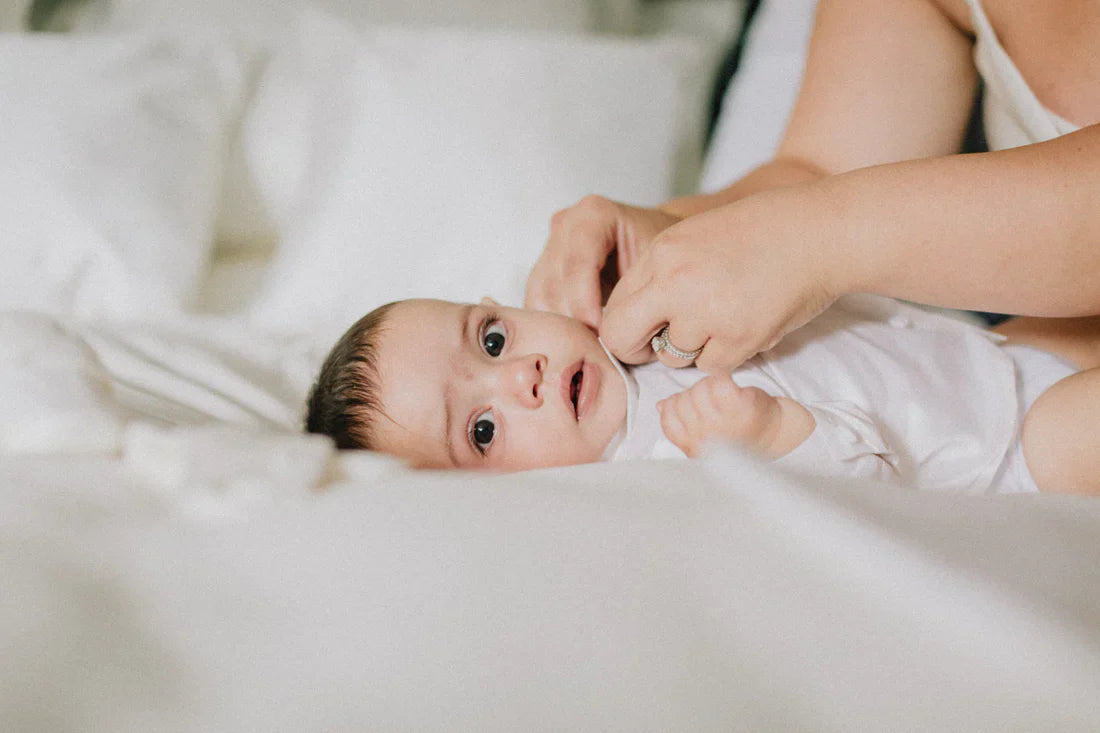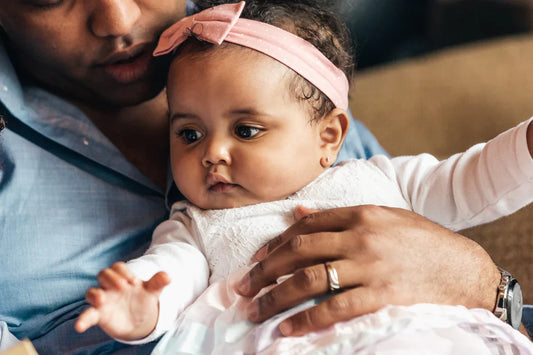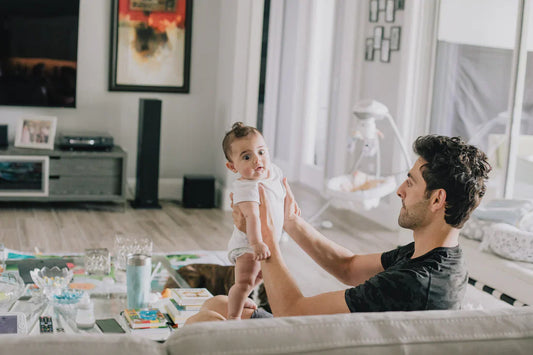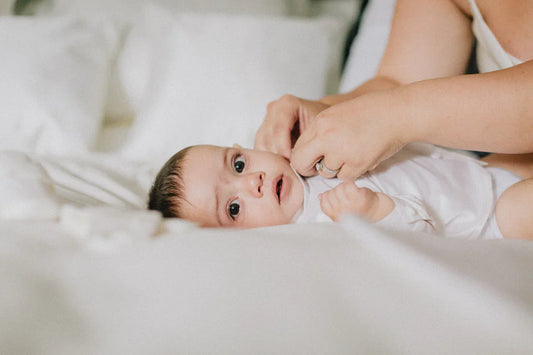Introduction
One of the biggest challenges new parents face is ensuring their baby gets enough rest. Sleep is crucial for a baby’s growth, development, and overall well-being. However, creating the ideal sleep environment can feel overwhelming with so many products, routines, and advice available. In this blog, we’ll guide you through how to create a restful environment for your baby and promote healthy sleep habits for your little one.
Choosing the Right Crib and Mattress for Better Sleep
A comfortable, safe sleeping space is key to helping your baby get the rest they need. The crib and mattress should offer support and ensure your baby sleeps soundly throughout the night.
- Firm Mattress: Choose a firm, breathable mattress that fits snugly in the crib to reduce the risk of suffocation.
- Crib Bedding: Opt for breathable, soft cotton sheets, avoiding pillows, blankets, and stuffed animals in the crib to keep the environment safe.
- Mattress Protector: A waterproof mattress protector helps keep the mattress clean and dry, especially during late-night diaper changes.
Establishing a Bedtime Routine: Consistency is Key
Babies thrive on routines, and establishing a consistent bedtime routine can signal to your baby that it’s time to wind down and prepare for sleep.
- Set a Bedtime: Establish a regular bedtime and stick to it as closely as possible. Consistency helps regulate your baby’s internal clock.
- Soothing Activities: Incorporate calming activities into your bedtime routine, such as reading a soft story, gentle rocking, or a warm bath.
- Avoid Overstimulation: Keep the environment calm and quiet as bedtime approaches, avoiding loud noises or bright lights that can interfere with your baby’s ability to relax.
Creating the Perfect Sleep Environment: Comfort and Safety
A restful sleep environment is crucial for your baby’s comfort and well-being. Let’s look at how to set up a cozy, safe, and soothing space for sleep.
- Temperature Control: Keep the room temperature between 68-72°F (20-22°C) to ensure your baby isn’t too hot or cold while they sleep.
- Soft Lighting: Use a dim nightlight or a soft lamp to create a calm atmosphere. Avoid bright lights that could disrupt sleep patterns.
- Sound Machine: A white noise machine or a lullaby-playing toy can provide soothing sounds to help your baby relax and fall asleep faster.
- Comfortable Sleepwear: Dress your baby in breathable, soft sleepwear to ensure they stay cozy throughout the night. Avoid overdressing, as overheating can lead to sleep disturbances.
Swaddling: A Calming Technique for Newborns
Swaddling is a technique that can help newborns feel secure and calm, mimicking the comfort of being in the womb.
- Safe Swaddling: Swaddle your baby using a lightweight, breathable swaddle blanket, ensuring their hips have room to move.
- Swaddle Alternatives: For older babies, consider swaddle sleep sacks or wearable blankets that provide warmth without restricting movement.
- When to Stop Swaddling: Once your baby starts rolling over, it’s time to stop swaddling to prevent any safety risks.
Safe Sleep Practices: Prioritizing Your Baby’s Safety
Ensuring your baby’s safety while they sleep is paramount. Here are a few safe sleep guidelines to follow:
- Back Sleeping: Always place your baby on their back to sleep, as this reduces the risk of sudden infant death syndrome (SIDS).
- Firm Sleep Surface: Make sure the crib mattress is firm and free of soft bedding, pillows, or stuffed toys that could cause suffocation.
- Avoid Co-Sleeping: While it’s tempting to share your bed with your baby, it’s safest for them to sleep in their own crib or bassinet next to your bed.
- Proper Sleeping Gear: Use baby sleep sacks or wearable blankets instead of loose blankets to keep your baby warm and safe.
Napping: How to Ensure Quality Daytime Sleep
Daytime naps are just as important as nighttime sleep. Healthy nap habits help your baby recharge and support their overall sleep schedule.
- Nap Schedule: Aim for consistent nap times during the day. Newborns typically sleep for 16-18 hours a day, including naps.
- Short Naps vs. Long Naps: While long naps are necessary for newborns, as your baby grows, aim for two to three longer naps each day rather than several shorter ones.
- Nap Environment: Create a similar sleep environment for naps as you do at night—dim the lights, use white noise, and keep the room at a comfortable temperature.
Monitoring Baby Sleep: Keep Track of Patterns
As your baby grows, it’s helpful to track their sleep patterns to understand their needs and adjust routines as necessary.
- Sleep Log: Keep a simple log of your baby’s sleep schedule, including bedtime, wake-up time, naps, and any nighttime wake-ups. This helps identify any issues and adjust routines accordingly.
- Baby Monitors: Consider using a baby monitor with video or audio to check on your baby’s sleep without disturbing them. Some models also include temperature sensors and alerts to ensure the environment stays comfortable.
Conclusion
A Good Night’s Sleep for Your Baby, and You
Creating a restful sleep environment and establishing healthy sleep habits early on will set your baby up for success in the years ahead. With a firm mattress, soothing bedtime routine, and safe sleep practices, your baby will be well on their way to getting the rest they need for growth and development.
Remember, every baby is different, and it might take some time to find the perfect routine and environment. Be patient, stay consistent, and soon enough, you’ll both be enjoying peaceful nights of sleep. With the right setup, your baby’s sleep will be a positive and calming experience, allowing you both to rest easy.




